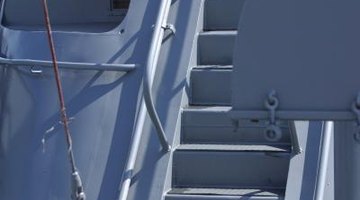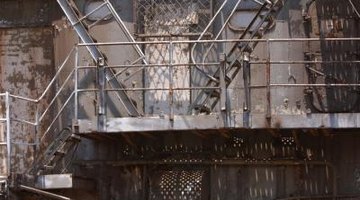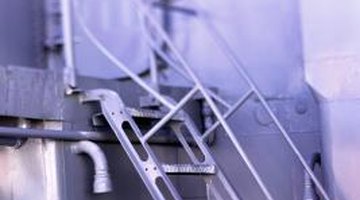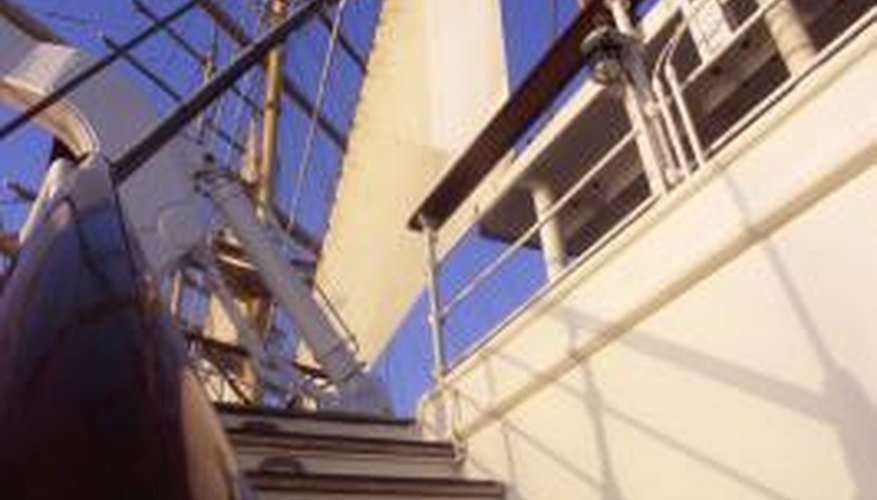A ship's ladder, also called "ship's stairs," refers to a set of stairs built to rise at a very steep angle. They were originally installed on nautical vessels due to the limited availability of space for a standard set of stairs. Ship's ladders are now frequently used in other space-restricted work environments. There are several specifications for the use of ship's ladders, including angle, weight capacity and size.
Location and Angle

A ship's ladder should only be used in locations that cannot fit a standard stairway. The ship's ladder needs to be installed so that its angle to horizontal plane (the ground, deck or floor) is between 50 and 70 degrees. Like all stairs, the minimum vertical clearance between the stair and the ceiling must be 7 feet.
Dimensions

Stair risers should be installed at consistent intervals. The selected interval must be between 6 1/2 inches and 12 inches of vertical rise from one tread to the next. Stair treads must be at least 4 inches deep and 18 inches wide. Like all stairs, every tread of a ship's ladder must be identical.
- Stair risers should be installed at consistent intervals.
- Stair treads must be at least 4 inches deep and 18 inches wide.
Weight Capacity

Each riser of a ship's ladder must comply with OSHA's general work surface requirements regarding weight capacity. The rule states that the stairs must be capable of supporting five times its intended load. In addition, an individual tread must be able to withstand 113 Kilogram of pressure loaded at the centre of the tread. If any work surface will support more than one person at a time, this weight requirement is increased by 113 Kilogram per person it is intended to support.
- Each riser of a ship's ladder must comply with OSHA's general work surface requirements regarding weight capacity.
- In addition, an individual tread must be able to withstand 113 Kilogram of pressure loaded at the centre of the tread.
Additional Specifications

All ship's ladders must have guardrails installed. The top rail of the guard must be capable of withstanding at least 90.7 Kilogram of direct pressure in either a downward or outward direction without failing. If the top rail is between 36 and 37 inches in height above the stair tread, it may also double as a handrail. If this requirement is not met, an additional handrail must be installed. Rails must be at least 1/4 inch in diameter.
Ship's ladders are required to have safety guards installed 6 inches behind the tread and parallel to the slope of the ladder. These guards are important to prevent a ship's ladder user's foot from slipping through the back side of the ladder while climbing.
- All ship's ladders must have guardrails installed.
- Ship's ladders are required to have safety guards installed 6 inches behind the tread and parallel to the slope of the ladder.
